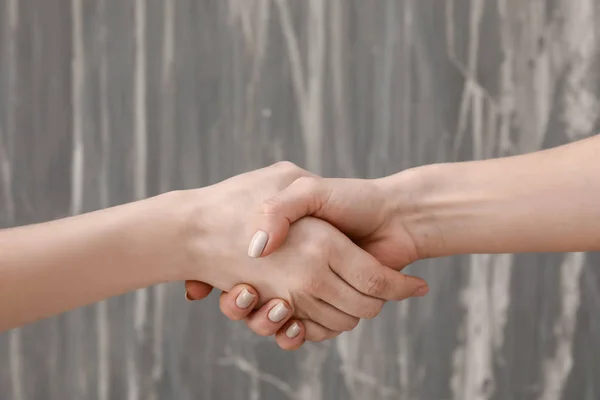Handshakes can leave a positive impression in social and professional interactions. However, handshakes can also go awry.
Nobody likes a limp, dead fish handshake. But neither do you want to crush someone’s hand with a death grip.
With Lluxxall, learn about art of smart and polite greeting etiquette that promotes self-assurance, respect and deep connections.
A handshake should last about three seconds, and there are several ways to make it go well. Here are five common handshake mistakes to avoid.
1. Trying to Be Dominant
A handshake is supposed to be a gesture of equality, but many people try to be dominant during the shake. One way they do this is by holding their hand palm-down against yours during the shake.
This is a clear sign that they want to take control of the encounter. If this happens to you, consider offering another greeting gesture such as a nod or verbal greeting instead of the handshake.
The general rule is to grip the other person’s hand with moderate pressure. The strength you apply should be similar to the force you would use to grip a door handle. You should also avoid squeezing the other person too hard, as this is seen as an indication of a lack of confidence.
2. Not Making Eye Contact
Whether you are male or female, eye contact is important when shaking hands. It indicates that you are confident and that you respect the other person enough to make eye contact with them.
Inappropriate eye contact can be a sign of nervousness or unease. It is also important to avoid looking at the ground when shaking hands, which can give the impression that you are lying or hiding something.
Another common handshake mistake is lingering too long. Shaking hands for too long can be uncomfortable and can make the other person feel rushed. This can also come across as if you are trying to assert your dominance over them, which is a bad idea in any context. Try to shake their hand for no more than three pumps.
3. Having Wet Hands
If your hands are wet, you need to dry them before shaking someone’s hand. Sweaty palms can be embarrassing to the other person and make them think you are nervous or insecure.
Don’t grip the other person’s hand too tightly or hold it for too long. This gives the impression that you are a controlling person and may be perceived as intimidating. Ideally, a handshake should last between two and five seconds.
The handshake is one of the first things a new person will notice about you. Getting it right can impact their first impression of you and the rest of your interaction. So take the time to practice and master your handshake. You won’t regret it. For the best results, shake with your right hand and only grab fingers if you need to.
4. Not Getting Your Grip Right
Handshakes can communicate a lot about a person. Having the right grip conveys power and confidence. Having the wrong grip conveys weakness and insecurity. There are many different handshake grips that people have, from the “dead fish” where the person’s hand never meets yours to the macho cowboy death grip.
A good rule of thumb is to use the same grip that you would use to hold a door handle. Avoid too much pressure or your hands will start to hurt.
It’s also important to not shake for too long. Shaking for too long can be uncomfortable and makes the other person feel like you are trying to dominate them. This can also be a sign of nervousness and insecurity. If you are nervous about shaking hands, try practicing with friends beforehand.
5. Trying to Be Too Personal
When shaking hands, it’s important to stay focused on the task at hand and avoid any unnecessary intimacy gestures. However, that doesn’t mean you should neglect to offer a firm and confident handshake.
In addition to gripping the person’s hand properly, it is also important to make eye contact during the shake and to hold their hand for an appropriate duration. A handshake that is too short can be perceived as insincere, while a handshake that is pulled away too quickly can be seen as rude.
Generally speaking, whoever is the more hierarchically senior person should initiate the handshake. For example, in a job interview, the hiring manager should be the one to extend their hand first. However, if you see that someone is clearly reluctant to shake your hand, let them take the lead instead.
